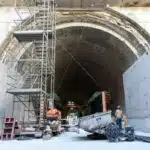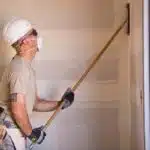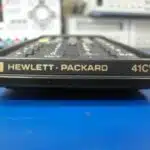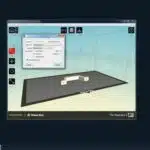Laser levels are powerful tools that have revolutionized the construction industry by making leveling and alignment tasks more accurate and efficient. They are used for a variety of applications, including installing tile, cabinets, shelves, wallpaper, and even hanging pictures. However, using a laser level may seem daunting at first glance. In this article, we will provide a step-by-step guide on how to use a laser level properly.
To begin with, it is essential to understand the basics of how a laser level works. A laser level projects a beam of light that is perfectly straight and level over long distances. The device typically consists of two parts: the laser emitter and the receiver or detector. The emitter generates the laser beam while the detector measures its height above the ground or reference surface. By adjusting the emitter’s position or angle, you can align objects accurately with each other or create a level line on walls or floors. With proper knowledge of how to operate a laser level effectively, you can save time and money while achieving professional-level results in your construction projects.
Understanding The Components Of A Laser Level
Laser levels are indispensable tools for professionals and do-it-yourself enthusiasts alike. They provide unparalleled accuracy in various tasks, from installing tiles to framing walls. To fully utilize the device’s capabilities, one must have a firm understanding of its components.
The first thing to consider is laser level accuracy. The accuracy rating of a laser level typically ranges from ±1/16 inch to ±1/4 inch at 30 feet. The smaller the number, the more precise the device is. However, higher accuracy ratings come at a higher cost. It is essential to choose a model that suits your project needs and budget.
Maintaining laser level components is also crucial for optimal performance and longevity. Regular cleaning of lenses and housing prevents dirt accumulation that may hinder accurate readings. Additionally, ensure that batteries are charged or replaced before each use to avoid unexpected shutdowns during critical moments.
In summary, understanding laser level accuracy and maintaining its components are vital in maximizing its effectiveness in any task. When choosing a model, consider your project needs and budget carefully. Proper maintenance ensures consistent performance and extends the device’s life span. In the next section, we will discuss how to choose the right type of laser level for your project needs.
Choosing The Right Type Of Laser Level For Your Project
When it comes to using a laser level, choosing the right type is crucial to ensure accuracy and durability. Here are some important factors to consider when selecting a laser level for your project:
- Type of laser: There are two main types of lasers used in laser levels: red and green. Green lasers are generally more visible and accurate than red ones, but they also tend to be more expensive.
- Range: Different laser levels have different ranges, so it’s important to choose one that fits the size of your project. Make sure to select a laser level with a range that will cover the entire work area.
- Self-leveling capability: A self-leveling laser level can save you time and ensure accuracy by automatically adjusting itself to ensure that the beam is perfectly level.
When it comes to accuracy, there are few tools more reliable than a good laser level. However, durability is also an important consideration when selecting a tool that you’ll be using frequently on job sites. Some things to look for when assessing durability include:
- Construction quality: Look for a solidly built tool with durable materials that can withstand heavy use and occasional bumps or drops.
- Water resistance: Many job sites involve exposure to water or other liquids. Choosing a water-resistant or waterproof laser level can help prevent damage from moisture.
- Warranty: Finally, it’s always wise to choose a tool with a good warranty. This ensures that if anything does go wrong with your laser level over time, you’ll be able to get it repaired or replaced without hassle.
Now that you understand some of the key factors involved in choosing the right type of laser level for your project, let’s move on to discussing how to properly set up your new tool for optimal results.
Properly Setting Up Your Laser Level
- When selecting the right laser level for a job, it is important to consider the size, weight, and accuracy of the laser level in relation to the type of job being performed.
- In order to ensure accuracy, the tripod should be setup on a level surface and the laser level should be secured to the tripod in a manner that prevents it from slipping during operation.
- It is important to ensure that the laser level is properly calibrated prior to operation in order to ensure accuracy.
- The tripod must be set at the correct height to ensure the laser level is properly aligned and the laser beam reaches its intended target.
Choosing The Right Laser Level
When it comes to properly setting up your laser level, choosing the right one is crucial. The accuracy of your laser level will depend on its features, which vary from model to model. To ensure that you choose the right laser level for your needs, you should consider factors such as range, accuracy, and self-leveling capabilities.
One important feature to look for in a laser level is its accuracy. Laser levels can have an accuracy of anywhere from 1/8 inch at 30 feet to 1/16 inch at 100 feet or more. The more precise the accuracy of your laser level, the better your results will be. You should also consider the range of your laser level, as this will determine how far it can project its beam. For indoor use, a range of 50-100 feet is usually sufficient, while outdoor use may require a longer range.
Another important feature to consider when choosing a laser level is its self-leveling capabilities. A self-leveling laser level uses an internal pendulum system that automatically adjusts the beam to be perfectly horizontal or vertical. This makes set up much faster and easier than manually leveling the device yourself. Some models also come with additional features such as adjustable height stands and tripod mounts for added convenience.
In conclusion, selecting the right laser level for your project can greatly impact its success. By taking into account factors such as accuracy, range, and self-leveling capabilities you can ensure that you choose a model that meets your specific needs and requirements. With the right tools in hand, you’ll be able to achieve precise measurements and accurate results every time.
Setting Up The Tripod
To ensure the accuracy of your laser level, it is important to properly set up its tripod. The stability of your tripod can greatly affect the leveling accuracy of your laser level. First, make sure that the tripod’s legs are fully extended and locked into position. This will help prevent any wobbling or shifting while in use.
Next, check that the bubble level on the tripod head is centered and level. This will ensure that your laser level is properly aligned with the ground and ready for use. Adjust the tripod’s height as needed to achieve the desired projection height for your project.
Finally, once your laser level is mounted onto its tripod, turn on its self-leveling feature if applicable. This will automatically adjust the beam to be perfectly horizontal or vertical according to gravity. By following these steps for setting up your tripod, you can maximize both its stability and accuracy while using your laser level for all of your projects.
Calibrating Your Laser Level
After setting up your laser level, the next crucial step is to calibrate it. Calibrating your laser level means adjusting its internal components to ensure that it provides accurate measurements. The process of calibration involves adjusting leveling and verifying accuracy.
To adjust leveling, you need to ensure that your laser level is perfectly level. You can do this by placing it on a flat surface and checking the bubble vials. If the bubble vials are not centered, you will need to adjust the leveling screws until they are. Once your laser level is leveled, you can then verify its accuracy.
To verify accuracy, you can use a benchmark or another reference point to compare your laser level’s measurements with those of a known accurate tool. This step is crucial because if your laser level gives inaccurate measurements, it can lead to costly errors in construction or other projects.
By properly calibrating your laser level, you can be confident that it will provide accurate measurements for all of your basic leveling tasks. In the next section, we will discuss how to use a laser level for these tasks and some tips for getting the most out of your tool.
Using A Laser Level For Basic Leveling Tasks
- Prior to using a laser level, it is important to ensure that the apparatus is properly calibrated and has sufficient power.
- Common laser level measurement techniques include single axis, two axis, and three axis measurements.
- To ensure accuracy, the single axis technique requires that the laser line is aligned with the reference line on the same plane.
- The two axis technique requires that the laser lines be aligned with the reference lines on two separate planes.
- The three axis technique requires that the laser lines be aligned with the reference lines on three separate planes.
- A simple way to check the accuracy of measurement is to compare the results of the laser level with a conventional measuring tape.
Preparing The Laser Level
Before using a laser level, it is important to prepare it properly. Cleaning the laser level is the first step in ensuring accurate readings. Any dirt or debris on the laser lens can cause errors in measurement and compromise the project’s success. Follow the manufacturer’s cleaning instructions to avoid damaging the device.
Proper storage of your laser level is also crucial in maintaining its accuracy. Store it in a protective case or bag, away from excessive heat or moisture that can cause damage to its delicate components. Avoid placing heavy objects on top of it, which can cause misalignment of internal parts.
In conclusion, taking care of your laser level will help ensure its longevity and accuracy when performing basic leveling tasks. Proper cleaning and storage practices are essential to maintain its functionality and prevent unnecessary repairs or replacements. By following these simple steps, you can maximize the usefulness of your laser level for years to come.
Laser Level Measurement Techniques
When using a laser level for basic leveling tasks, it is important to understand the various measurement techniques available to ensure accurate readings. Laser level beam visibility is an essential factor in determining the appropriate technique to use. Depending on the task at hand, different techniques may be required to achieve optimal accuracy and precision.
One common technique used with laser levels is the point-to-point method. This involves taking measurements between two points, such as from one end of a room to another, using the laser level beam as a guide. Another technique is the rotary method, which involves rotating the laser level beam around a fixed axis to create a horizontal or vertical plane. This method is useful for more extensive projects that require multiple measurements across an area.
It is crucial to note that regardless of the measurement technique used, accuracy and precision are critical factors in achieving successful results. The slightest deviation can compromise the entire project’s success. Therefore, it is recommended that users take extra care when handling their laser levels and familiarize themselves with the device’s features and functions before use. By doing so, they can maximize its effectiveness and efficiency while ensuring accurate measurements every time.
Checking Accuracy Of Measurement
Once the laser level has been set up and leveled, it is essential to check the accuracy of measurement. This is a crucial step that cannot be overlooked, as even minor errors in measurement can result in significant issues down the line. One critical consideration when checking alignment is to ensure that the laser level beam is hitting the target at the intended point.
Measuring distance accurately is another critical factor in ensuring precise measurements with a laser level. One way to do this is by using a tape measure or ruler to check the distance between two points marked by the laser level beam. It is also essential to ensure that the surface on which the laser level rests remains stable throughout use, as any movement can impact measurement accuracy.
To further enhance accuracy during use, it may be useful to invest in additional accessories such as tripods and mounting brackets. These can provide greater stability and precision over longer distances or when working on uneven surfaces. Ultimately, taking extra care during set-up and use, along with checking alignment and measuring distance throughout the process, will help ensure accurate results each time a laser level is used for basic leveling tasks.
Using A Laser Level For Aligning Objects
Precision and accuracy are two vital qualities that are indispensable in any project. Whether it is for landscaping or DIY home projects, aligning objects requires a high level of accuracy to achieve the desired result. One tool that guarantees precision is a laser level.
Using a laser level for landscaping involves marking out the area intended for excavation, leveling the ground, and laying pavers or blocks. A laser level ensures that the foundation is even and at the right height, providing a stable base for the structure being built. It eliminates guesswork and reduces errors, making the job quicker and easier to complete.
Similarly, using a laser level for DIY home projects such as hanging shelves, cabinets or installing curtain rods can be done with ease. A laser level saves time by eliminating the need for a second person to hold one end of the object while measuring its height on both sides. With just one person operating a laser level, tasks become more efficient as measurements can be taken accurately and quickly.
Transitioning into using a laser level for installing tile involves understanding how to use it to avoid uneven tiles. The tool helps in achieving uniformity in spacing between tiles as well as ensuring they are correctly placed at an equal height from each other. By following simple instructions on how to use a laser level, one can achieve professional-grade results with ease.
Using A Laser Level For Installing Tile
When it comes to installing tile, using a laser level can make the process much easier and more precise. One of the main benefits of using a laser level is that it ensures accurate tile spacing. By projecting a straight line across the surface where the tiles will be installed, you can easily see if your tiles are evenly spaced or not. This helps to create a more professional-looking finish and can even save you time by avoiding any mistakes that may require you to redo the work.
Another benefit of using a laser level for installing tile is that it helps with grout lines. When tiles are not lined up properly, it can result in uneven grout lines which can be unsightly and difficult to clean. By using a laser level to ensure that all tiles are perfectly aligned, you’ll achieve even grout lines throughout your installation. This makes for a smoother finish and makes cleaning and maintenance much easier in the long run.
In summary, using a laser level for installing tile has many advantages including ensuring accurate tile spacing and even grout lines. By taking advantage of this technology, you’ll be able to create a professional finish while saving yourself time and effort in the process. In the next section, we’ll explore how to use a laser level for hanging cabinets.
Using A Laser Level For Hanging Cabinets
Now that you have learned how to use a laser level for installing tile, it’s time to move onto the next task – hanging cabinets. This task requires more precision as the cabinets need to be level and at the right height for them to fit perfectly. Failing to do so can result in an unsightly and dysfunctional kitchen.
To ensure that your cabinets are installed correctly, start by adjusting the height of your laser level according to the desired cabinet height. Place the laser level on one end of the wall where you want to install your cabinets and turn it on. Check if the laser line is level by using a bubble level or a built-in digital display.
Once you have confirmed that your laser line is level, mark it on both sides of your wall with masking tape. From there, you can begin installing your cabinets along this line, making sure they are flush against the wall and screwed securely in place. With these steps in mind, you can confidently hang your cabinets with ease and accuracy using a laser level.
- Use a stud finder to locate studs behind drywall.
- Ensure cabinets are spaced evenly.
- Make sure all screws are tight.
- Double-check measurements before cutting materials.
- Test run first before installing all cabinets for any necessary adjustments.
With this knowledge under your belt, you’ll be able to confidently hang kitchen cabinets like a pro using a laser level. However, what if we told you that there’s another way to use this versatile tool? In our next section, we will explore how to use a laser level for installing wallpaper – another task where precision is crucial.
Using A Laser Level For Installing Wallpaper
Wallpaper alignment is crucial when it comes to installing wallpaper. The slightest misalignment can ruin the entire aesthetic of the room. Fortunately, a laser level can be an excellent tool for ensuring that your wallpaper is installed perfectly straight and even.
Laser level accuracy is unmatched when compared to traditional levels. With a laser level, you can easily project a straight line across the wall, which can be used as a guide for aligning your wallpaper. Simply attach the laser level to the wall or place it on a tripod stand and adjust it until the laser beam hits your desired spot. This will ensure that your wallpaper is aligned perfectly straight.
When using a laser level for installing wallpaper, it’s important to take extra care during the process. First, make sure that your walls are clean and free of any debris. Any bumps or imperfections in the wall will affect how the wallpaper adheres and looks once installed. Next, ensure that you have enough adhesive for all of your wallpaper strips before beginning installation. Finally, take your time and use the laser level as a guide to help you align each strip of wallpaper perfectly.
Using a laser level for hanging pictures is another great way to ensure that everything is aligned properly on your walls. With its accuracy and ease-of-use, a laser level can be used to project lines onto your walls that will act as guides for where to hang each picture frame. By taking advantage of this tool, you’ll be able to create beautiful displays without having to worry about crooked frames or uneven spacing between them.
Using A Laser Level For Hanging Pictures
To hang pictures using a laser level, it is essential to first ensure that the wall is clean and smooth. Use a stud finder to locate the studs in the wall, which will provide a secure anchor for your hanging frames. Once you have located the studs, mark them with a pencil so that you can refer to them later.
Next, set up your laser level according to the manufacturer’s instructions. Adjust the angle of the laser beam so that it is at the desired height and level. If necessary, use a tripod or other support to stabilize the laser level.
Once your laser level is properly set up, you can begin hanging frames with ease. Start by aligning the top edge of your frame with the laser beam and then adjust its position until it is perfectly level. Use your marked stud locations as reference points and adjust accordingly. Repeat this process for each frame until all are securely hung on the wall.
To achieve accurate results when using a laser level for hanging pictures, there are some tips you should keep in mind. First, make sure that your laser level is calibrated correctly before use. Additionally, take care not to bump or move it during use as this can affect its accuracy. Finally, be patient and take time to make adjustments as needed to ensure that each frame is perfectly aligned with both the laser beam and nearby studs for maximum stability and security.
Tips For Achieving Accurate Results With Your Laser Level
Achieving accurate results with your laser level requires patience, attention to detail, and the proper handling of obstacles that may hinder its performance. One of the first things you need to do before using your laser level is adjusting its settings according to your needs. This means selecting the appropriate mode (horizontal, vertical, or cross-line) and ensuring that the laser beam is levelled properly.
Handling obstacles is another crucial aspect of achieving accurate results with your laser level. Obstacles such as bright light sources, reflective surfaces, or uneven surfaces can interfere with the accuracy of your readings. To avoid this, make sure to position your laser level away from direct sunlight and other bright light sources. Additionally, use a tripod or mounting bracket to ensure that the laser level remains stable on uneven surfaces.
By following these tips for achieving accurate results with your laser level, you will be able to complete projects quickly and efficiently without sacrificing precision. In the next section, we will discuss how to maintain your laser level and keep it in good working condition for future use.
Maintaining Your Laser Level
In order to maximize the lifespan of your laser level, it is important to properly maintain it. One key aspect of maintenance is cleaning your laser level after every use. This can be done using a soft cloth or brush to remove any dust or debris that may have accumulated on the device. Additionally, if there are any stubborn stains or marks on the laser level, you may use a small amount of rubbing alcohol and a microfiber cloth to gently clean the affected area.
Another important aspect of maintaining your laser level is storing it properly. When not in use, it is recommended to store your laser level in a cool, dry place that is free from any excessive moisture or temperature fluctuations. It is also important to ensure that the device is stored in its protective case, as this will help prevent any accidental damage from occurring during storage.
Lastly, if you plan on using your laser level frequently or for extended periods of time, it may be beneficial to invest in regular calibration services. This will ensure that your device remains accurate and reliable over time, which is essential for achieving precise measurements and avoiding any potential errors.
Now that we have covered how to clean and store your laser level, it’s important to understand some basic safety precautions that should be taken when using one. By following these guidelines and being aware of potential hazards associated with using a laser level, you can help prevent accidents and keep yourself and others safe while working with this powerful tool.
Understanding Laser Level Safety Precautions
Using a laser level can be an effective way to ensure precision in your construction projects. However, it is important to understand and follow proper laser level handling and safety precautions to avoid potential hazards. Just like how a surgeon needs to handle their scalpel with care, the same goes for individuals operating a laser level.
Proper laser level handling starts with familiarizing yourself with the device’s manual. This includes understanding how to turn it on and off, how to adjust the beam’s intensity, and how to properly calibrate it. Additionally, make sure that you are using the appropriate type of batteries or power source as specified by the manufacturer. Always store your laser level in a protective case when not in use.
Laser level safety precautions should always be observed to prevent accidents. The following table summarizes some common safety measures that should be followed:
| Laser Level Safety Precautions | Explanation |
|---|---|
| Wear protective eyewear | To protect your eyes from potential damage caused by the laser beam |
| Keep children and pets away | To prevent them from accidentally looking into the laser beam or knocking over the device |
| Do not point at people or animals | Direct exposure to a laser beam can cause severe burns or injury |
| Avoid using in wet conditions | Water can damage both the electronic components and battery of your laser level |
| Turn off when not in use | To conserve battery life and avoid accidental activation |
Understanding these proper handling techniques and safety precautions will help you work effectively and safely with your laser level. However, if issues do arise, troubleshooting common problems with your device may be necessary.
Troubleshooting Common Issues With Your Laser Level
Laser levels are essential tools in construction, and they help ensure that the project is executed accurately. However, even with proper use, laser levels can experience common errors that affect their functionality. Below are some troubleshooting tips to help you identify any issues with your laser level and possible quick fixes.
One of the most common laser level issues is poor accuracy or inconsistency when projecting a line. This problem often occurs when the batteries are low, or the level is not well calibrated. To fix this issue, ensure that your laser level is well calibrated and replace its batteries if necessary. If your laser level still fails to project a consistent line after calibration and battery replacement, consider getting in touch with a technician for a more comprehensive diagnosis.
Another common issue faced by laser level users is misaligned projections. This error occurs due to incorrect leveling of the device or an obstruction on the projection path such as dust, dirt, or debris. The quick fix for this problem entails checking whether your device is leveled correctly or clearing any obstructions on its projection path before using it again.
In conclusion to these quick fixes for common problems encountered while using a laser level, it’s essential always to check for calibration and battery life before use; also, ensure that obstructions are cleared before projecting lines. If all else fails when addressing these issues contact an expert technician to handle more comprehensive diagnoses. Next up we will cover advanced techniques for using a laser level in construction projects without taking unnecessary steps towards precision and efficiency at work sites.
Advanced Techniques For Using A Laser Level In Construction Projects
Now that you have learned how to troubleshoot common issues with your laser level, it’s time to move on to more advanced applications and techniques. While a laser level can be a useful tool for DIY projects around the house, it is an essential tool in the construction industry. With professional tips and techniques, you can use your laser level to its fullest potential.
One advanced application of a laser level is its ability to project multiple beams at once. This feature allows you to measure and mark out complex angles and curves accurately. Additionally, some models come equipped with adjustable bases that allow you to tilt the laser in different directions. This feature is useful when working on sloped surfaces or creating angled cuts.
Another technique for using a laser level in construction projects is creating a horizontal reference line. By positioning the laser at one end of a room or wall, you can create a straight line across the entire surface area. This technique is particularly useful when installing cabinets or laying tile flooring. Simply align the bottom edge of the cabinet or tile with the reference line for accurate installation.
By mastering these advanced applications and techniques for using your laser level, you’ll be able to tackle even more complex construction projects with confidence and precision. Remember to always follow safety guidelines when working with any power tool or equipment, and never hesitate to seek professional advice if needed.
Conclusion
The laser level is a crucial tool for construction and DIY projects, allowing for accurate and efficient leveling. To use a laser level, one must first understand its components, choose the appropriate type of laser level for their project, and properly set it up and calibrate it. Basic leveling tasks can then be easily accomplished using the laser line projected by the device.
It is important to maintain safety when working with a laser level, as exposure to the beam can cause eye damage. Troubleshooting common issues with the device, such as calibration errors or battery failure, will ensure its longevity and effectiveness.
According to a survey conducted by the National Safety Council in 2019, falls were responsible for 36% of all preventable deaths in the construction industry. The use of a laser level can greatly reduce the risk of falls by ensuring that surfaces are level and safe to work on. By following proper guidelines and techniques, individuals can effectively utilize this tool to improve safety and efficiency on job sites.
Image Credits
- “New laser level” by Vincent Ma (featured)

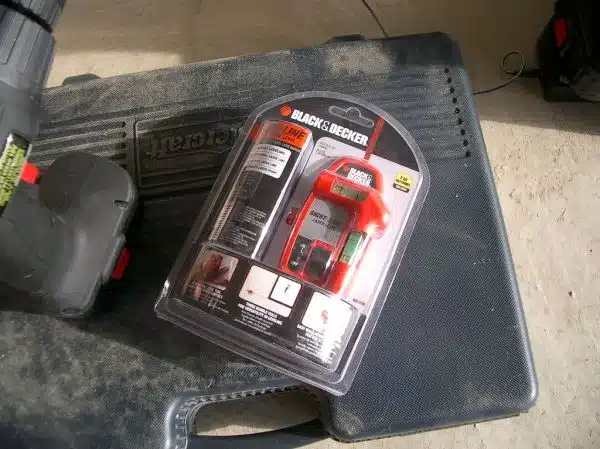

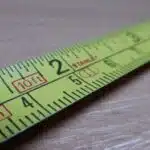





![Calculating How Much Stone Dust You Need 9 [Blog Post]Stone Dust © Oxfam Australia](https://green-life.blog/wp-content/uploads/2023/05/GdZVzgTqPhjq-150x150.jpg.webp)




